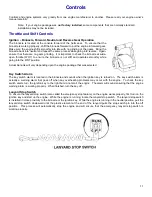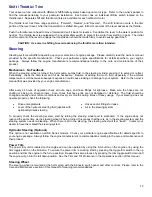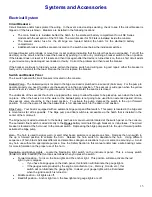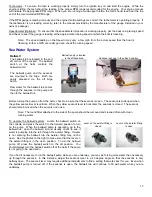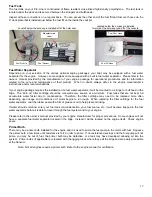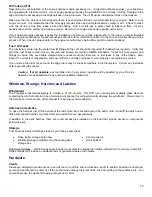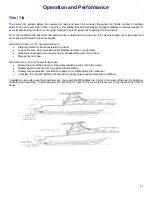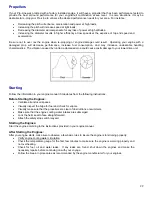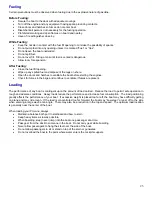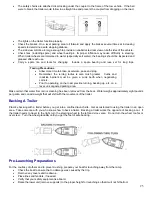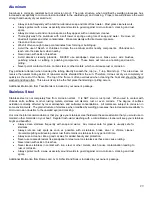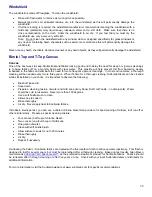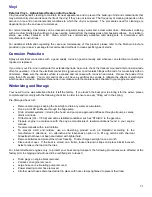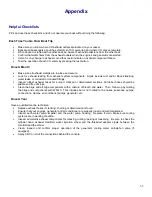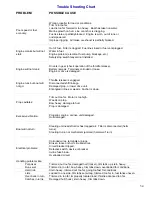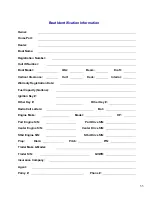
25
The safety chains are attached crisscrossing under the coupler to the frame of the tow vehicle. If the ball
were to break, the trailer would follow in a straight line and prevent the coupler from dragging on the road.
The lights on the trailer function properly.
Check the brakes. On a level parking area roll forward and apply the brakes several times at increasing
speeds to determine a safe stopping distance.
The side view mirrors are large enough to provide an unobstructed rear view on both sides of the vehicle.
Check tires (including spare) and wheel bearings. Improper inflation may cause difficultly in steering.
When trailer wheels are immersed in water (especially salt water), the bearings should be inspected and
greased after each use.
Carry a spare tire and tools for changing. Include a spare bearing and race set for long trips.
Towing Precautions
Allow more time to brake, accelerate, pass and stop.
Remember, the turning radius is also much greater. Curbs and
roadside barriers must be given a wide berth when negotiating
corners.
Prior to operating on the road, practice turning, backing up, etc. on a
level, un-congested parking area.
Make certain that water from rain or cleaning has been removed from the boat. Water weighs approximately eight pounds
per gallon and can add weight that will shift with the movement of the trailer.
Backing A Trailer
Practice backing with a trailer
before
you get into a confined launch site. Get accustomed to using the trailer in an open
area. Take someone with you who knows how to back a trailer. Backing a trailer works the opposite of backing a car. If
the trailer needs to travel to the right, turn the steering wheel to the left and vice versa. Do not turn the wheel too far or
over steer. Turn the wheel gradually until you get the feel of safe backing.
Pre-Launching Preparations
For the courtesy of others and to prevent rushing, prepare your boat for launching away from the ramp.
Check the boat to ensure that no damage was caused by the trip.
Remove any covers and tie downs.
Place lines and fenders, if needed.
Verify that your safety equipment is aboard.
Raise the lower unit (remove supports) to the proper height for launching so that it will not hit bottom.
Summary of Contents for 2012 21 CC
Page 6: ...2...

